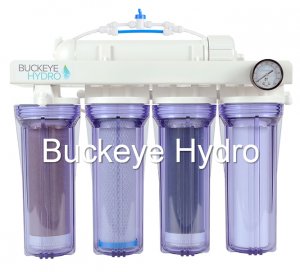 These tips aren’t secret, but it’s come to my attention that some of the larger retailers in our industry don’t talk about a few simple things that can greatly extend your filter life reducing costs long term. Many retailers offer standard four stage systems with pretty decent filters, but in a brief conversation on Facebook we saw users with tap water TDS readings from 150 TDS all the way up to over 1,000 TDS. Would the standard four filters that come with run-of-the-mill systems be best suited for those users? Of course not.
These tips aren’t secret, but it’s come to my attention that some of the larger retailers in our industry don’t talk about a few simple things that can greatly extend your filter life reducing costs long term. Many retailers offer standard four stage systems with pretty decent filters, but in a brief conversation on Facebook we saw users with tap water TDS readings from 150 TDS all the way up to over 1,000 TDS. Would the standard four filters that come with run-of-the-mill systems be best suited for those users? Of course not.
In my opinion you should talk directly with an RO/DI specialist. These systems will not cost you anymore than those from large box retailers, but they will be much better suited to your specific needs. All these companies do is purify water; generally in many different industries. They’re not also trying to sell skimmers, lights, pumps, etc. They eat, sleep and dream of purifying water, so I lean on them in my various applications for clients as all of their source water is different than mine. Buckeye Hydro and Spectrapure have been beyond helpful in the past, and I highly recommend them. Of course there are others out there, I just don’t have first hand experience with them.
Over the past thirteen years these are the least talked about and most helpful tips I’ve gleaned:
- Number of filters doesn’t matter as much as some people tout. If you want to have thirty two filters to look like a badass go for it, but it’s not going to save you any money, or produce more purified water. Generally these four filters will suffice: sediment filter –> carbon –> RO membrane –> DI. If you have chloramines you may opt to add one additional stage for a specialty filter that removes chloramines.
- Individually flush your new filters after installing. This is a big one I’ve only seen a few retailers mention. Why? Probably because other retailers are glad to sell you new filters when you prematurely foul them. Carbon filters in particular give off crazy amounts of [carbon] dust the first few minutes they’re ran. If they’re not flushed this dust goes directly to the membrane and begins to clog it. Membranes are coated in a preservative which unless flushed out leads directly to your DI causing unnecessary resin usage. More info on the flushing process here.
- For the most part all housings and brackets are the same. The fittings, check valves, auto shut-off valves, capillary flow restrictors, and other little components rarely talked about are not created equal. These components can increase filter life, and come standard from RO/DI specialists.
- Booster pumps should be installed inline just before the membrane. Booster pumps installed here should be fitted with a simple strainer to prevent carbon fines from entering the pump. A pressure gauge should be fitted between booster and RO membrane so we know what pressure we’re feeding the membrane. Most membranes are tested at 60 psi, but will produce significantly more water at 90 psi. I’ve found most tap water pressure in my area to be adequate for hobbyist usage, but know anything under 40 psi is suspect.
- Horizontal DI housings should be avoided. While they will work initially, as the DI resin settles over time it can create channeling through the housing bypassing the resin entirely. They also cannot hold as much DI resin which will have you changing out DI before you know it.
The filter we use in my office is five stages since we have chloramines. I have not changed any of the filters besides DI since November of 2014 (nearly 19 months), and we’re producing 300-450 gallons per week. We can produce about 600 gallons of water per DI resin exchange. As a business owner I obviously want to keep costs to a minimum, which this properly recommended system has allowed me to do.
I do not claim to be an expert in this field; I am not. But neither are a fair amount of people selling these everyday to hobbyists. RO/DI specialists will pull your municipality water readings from online reports and set you up with the best system for your specific needs.










0 Comments